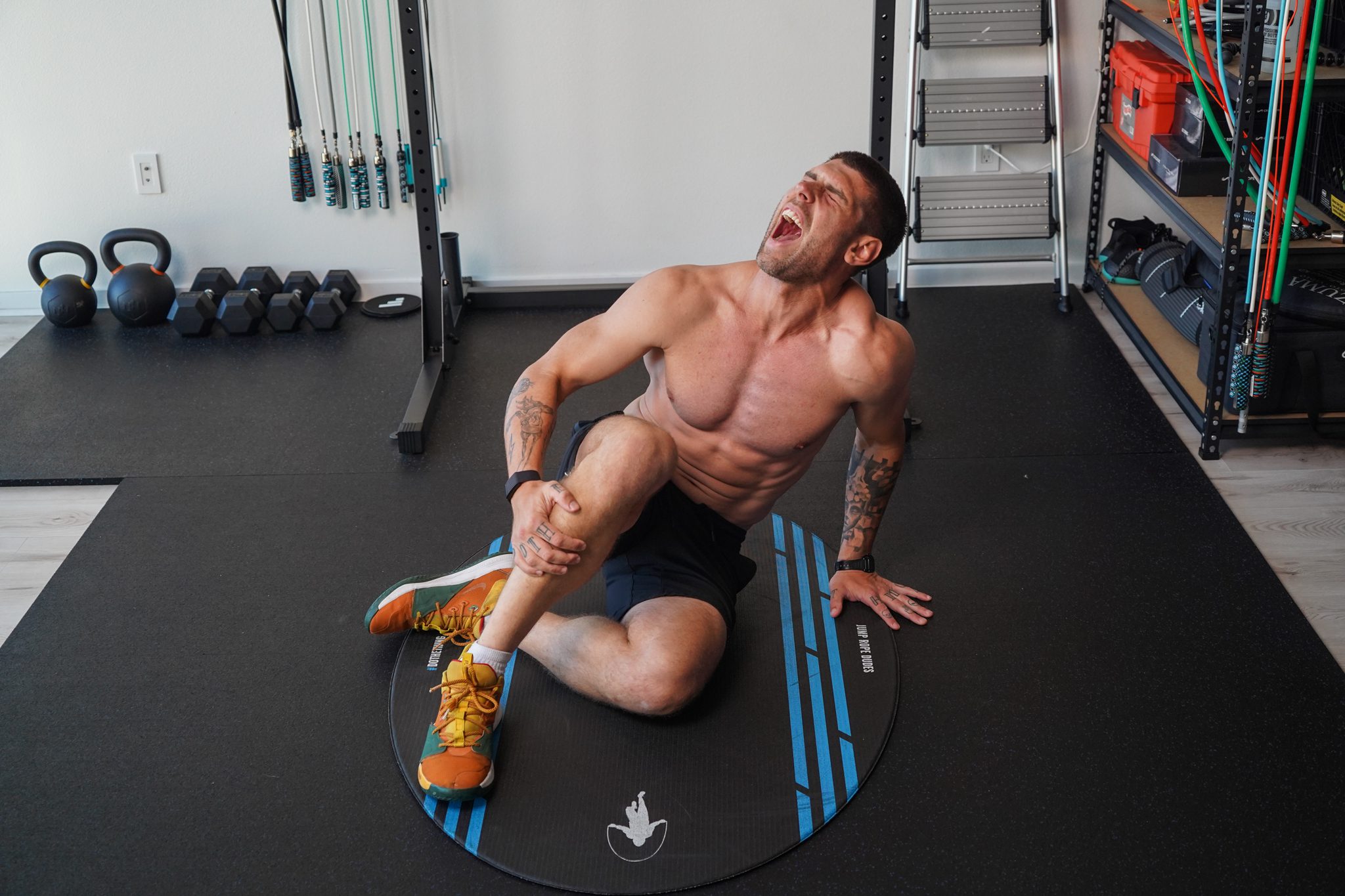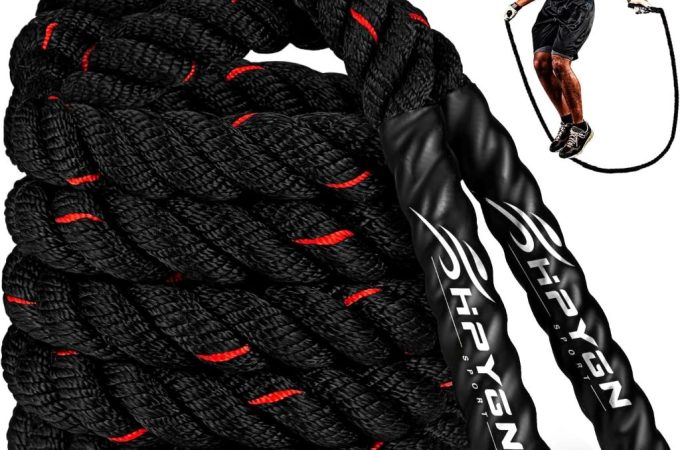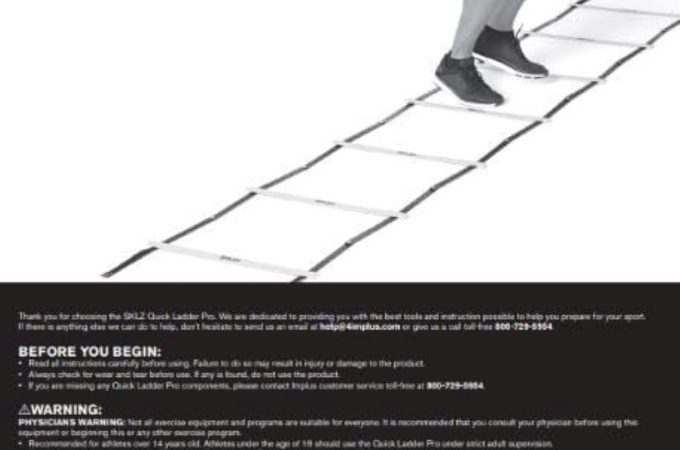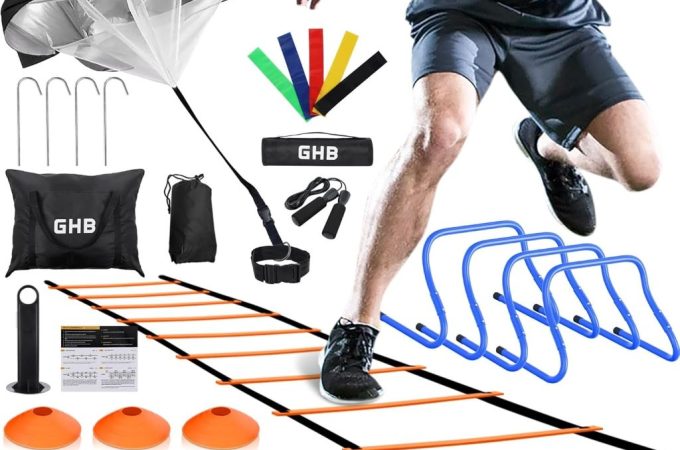
Why Does My Head Hurt When I Jump Rope?: Unraveling the Mystery
Headaches during jump roping are often caused by dehydration or improper breathing. Tense neck muscles or a tight jaw can also contribute to discomfort.
Contents at a Glance
ToggleJump roping, a high-intensity exercise known for its cardiovascular benefits, can sometimes lead to unexpected headaches. These headaches can arise for several reasons, primarily from the physical exertion associated with the rapid and repetitive jumping. Dehydration is a common culprit, as intense workouts can lead to significant fluid loss, which in turn causes the brain to temporarily shrink away from the skull, causing pain.
Proper hydration before, during, and after your workout is crucial. Additionally, poor breathing techniques during exercise can lead to insufficient oxygen supply to the brain, triggering headaches. Ensuring you breathe deeply and regularly can help mitigate this issue. Lastly, the impact of jumping may tighten the muscles in your neck and shoulders, and clenching your jaw during intense physical activity can further increase tension, both of which can contribute to a headache.
Introduction To Jump Rope And Headaches
Jumping rope has gained immense popularity as a fitness activity. People of all ages enjoy its simplicity and cardiovascular benefits. Despite its many advantages, a common issue arises for some individuals: head pain during exercise. This discomfort can deter the enjoyment and benefits gained from jump roping. Many factors may contribute to this condition, and understanding them is crucial for a pain-free experience.
- Dehydration can lead to headaches.
- Improper technique may cause tension.
- Intense exercise might trigger exertion headaches.
Addressing these concerns is vital for a safe and enjoyable workout. With proper guidance and practice, jump roping can remain a fun and effective exercise without the discomfort of headaches.
Physiology Behind Exercise-induced Headaches
Jumping rope can cause headaches due to physical exertion. This activity increases blood flow and pressure in the brain. As a result, blood vessels may dilate, leading to a pounding sensation. The body releases various chemicals during intense exercise. These substances can provoke head pain.
Our brains are sensitive to changes in oxygen and carbon dioxide levels. Rapid breathing while jumping rope alters these levels. It might trigger a headache in some individuals. Ensuring proper hydration and warm-up can help mitigate this effect.
Jump Rope Technique And Head Pain Correlation
Jumping rope requires precise technique to avoid pain. Head pain can signal improper form during the activity. It’s crucial to maintain a straight posture and evenly distributed weight.
Lack of coordination and rhythm may lead to awkward jumps. These can increase the impact on your head and neck. Proper timing and fluid motions help in reducing stress. This allows for a pain-free experience.
Ensuring correct posture and smooth movements is essential. They help in preventing unnecessary strain. Beginners should focus on mastering the basics before attempting faster speeds or more complex techniques. This helps in preventing headaches and other discomforts.

Credit: m.youtube.com
Dehydration: A Trigger For Headaches
Staying hydrated is crucial during physical activities like jump roping. Insufficient water intake can lead to headaches.
Jumping rope is an intense workout that increases the need for fluids. Head pain may signal the body’s need for water.
Recognizing dehydration early is key. Look for dry mouth, fatigue, and dark urine. These are common indicators.
Prevent dehydration by drinking water before, during, and after exercise. This is essential for performance and avoiding headaches.
Blood Sugar Levels And Exercise
Maintaining stable blood sugar is key during exercise. Jumping rope demands energy quickly. Low glucose levels can cause headaches. Eating a balanced snack before working out helps. This snack should include proteins and carbs. Steady glucose fuels your muscles and brain effectively.
The Influence Of External Factors
Jumping rope can hurt your head due to weather and equipment.
Changes in temperature or humidity impact how your head feels. Hot, humid days might increase headache chances. Cold, dry weather can do the same.
Your surroundings also play a big role. Jumping on hard surfaces can cause more impact to your body, leading to headaches. Using a mat might help reduce this.
Make sure your rope is the right length. Too long or short can strain your body, causing head pain.
Preventative Measures And Remedies
Experiencing headaches during or after jumping rope can be quite bothersome. A proper warm-up routine is crucial to help prevent such discomfort. Initiating your exercise with gentle stretching can ease your body into the more strenuous activity. Consider incorporating light aerobic exercises, like jogging in place, to gradually increase your heart rate.
After completing your jump rope session, cool-down strategies are equally important. Gradually reducing the intensity of your activity allows your body to adjust back to rest. Implement slow-paced walking and stretching exercises to minimize post-exercise headaches. These steps ensure a smooth transition and aid in recovery, keeping those unwanted headaches at bay.
Credit: www.quora.com
When To Seek Medical Advice
Jumping rope should be a safe, fun exercise, but painful symptoms may indicate a need for medical attention. Headaches while exercising can signal various health issues, some requiring professional advice.
Be alert to severe, sudden headaches or those that persist after stopping the activity. Other alarming signs include vision changes, loss of balance, or nausea.
These symptoms should prompt an immediate consultation with a healthcare provider. Recurring headaches during exercise warrant a thorough evaluation to rule out underlying conditions.
Conclusion: Enhancing Your Jump Rope Experience
Experiencing headaches during jump rope sessions can dampen the fun. Proper technique is crucial for a headache-free workout. Ensure you’re jumping on a forgiving surface and wearing appropriate footwear. Stay hydrated and maintain a consistent breathing pattern while jumping. Gradually increase intensity to allow your body to adapt. These steps promote a safe and enjoyable jump rope experience.

Credit: www.wikihow.com
Frequently Asked Questions
Why Does Jumping Make My Head Hurt?
Jumping can cause head pain due to sudden movements jarring the brain or changes in blood pressure. Always consult a doctor for persistent issues.
When I Jump Rope, I Get A Headache.?
Jumping rope can cause headaches due to dehydration, high impact, or tense neck muscles. Stay hydrated, warm up properly, and relax your neck and shoulders to help prevent this.
Is Jump Rope Good For The Brain?
Yes, jump rope can benefit the brain by enhancing coordination, rhythm, and cognitive function. It also boosts mental alertness and concentration.
Why Does Jump Rope Hit My Head?
Jump rope may hit your head if it’s too long or your timing is off. Adjust the rope length and practice to improve coordination.
Conclusion
Jumping rope can be a great workout, but it shouldn’t come with a headache. Remember, proper technique and hydration are key. If pain persists, consult a healthcare professional. Keep your fitness journey safe and enjoyable, minus the discomfort. Stay informed, stay healthy, and keep jumping!





